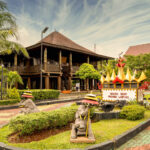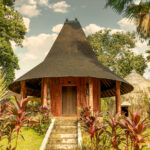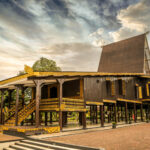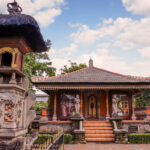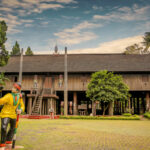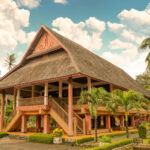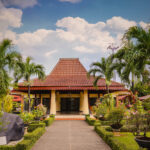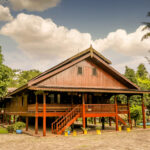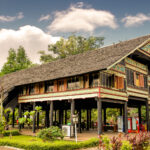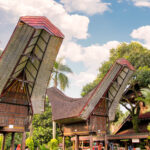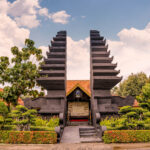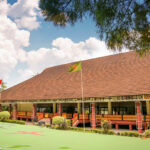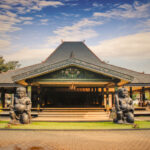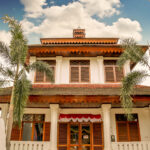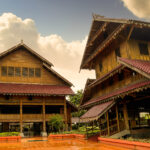Central Sulawesi, the Indonesian province with the most regional languages—21 in total—is home to a variety of indigenous ethnic groups, such as the Kaili, Pamona, Mori, Bungku, Saluan, Banggai, Balantak, Buol, Tolitoli, and many others.
At the Central Sulawesi Pavilion in TMII, visitors are invited to experience the local culture and traditions through four traditional structures: the Souraja (a noble house of the Kaili people), the To Lobo (Tambi house) from South Lone, a Gambiri (rice barn), and an office building used as an art and souvenir shop.
The Souraja, a stilt house adorned with carved wooden panels (panapiri) and crowned with a carved crest (bangko-bangko), is divided into three main rooms. The front room (Lonta Karawana) serves as a guest sleeping area, while the middle room (Lonta Tatangana) is used to welcome family visitors and to display traditional Kaili costumes and wedding processions. The back room (Lonta Rorana) functions as a dining area, with women’s bedrooms located in the rear corners.
In the back building, the Avu or kitchen area showcases Donggala sarong weaving. The square-shaped Tambi house features a steep, elongated pyramid roof and a single entrance on the left front side (Lobana). At its center is the rapu, which serves as a kitchen and provides light and warmth at night. An adjacent open space functions as a dining room, bedroom, and guest reception area. The door is decorated with a carved water buffalo head, while buffalo horns of various sizes are mounted on the main ridge pillar. Also on display are the Tadulako and Langkae Bulava statues from South Los, representing a brave and handsome father and a beautiful mother.
DID YOU KNOW?
One of Palu’s most beloved culinary delights is Kaledo, a tender beef bone soup served with a flavorful clear broth. Made with tamarind, bird’s eye chili, and salt as the main spices, this savory dish is best enjoyed with either rice or boiled cassava.



